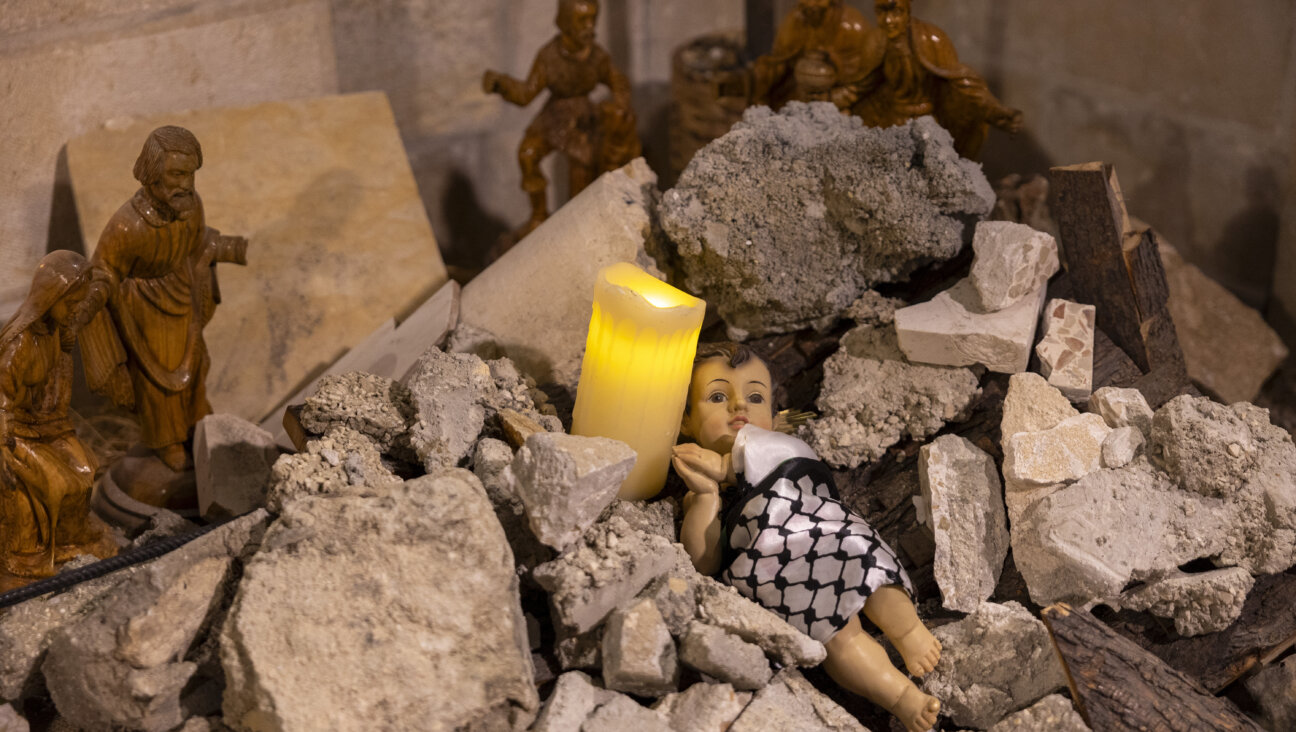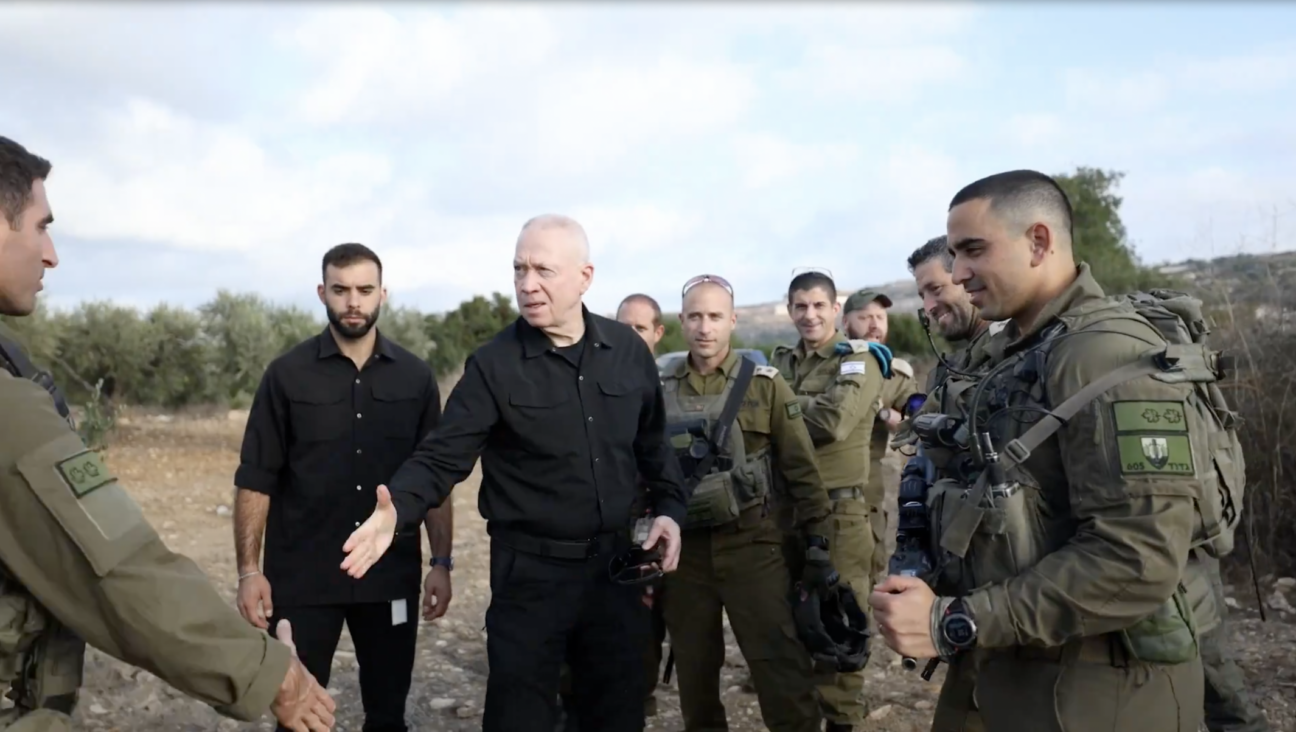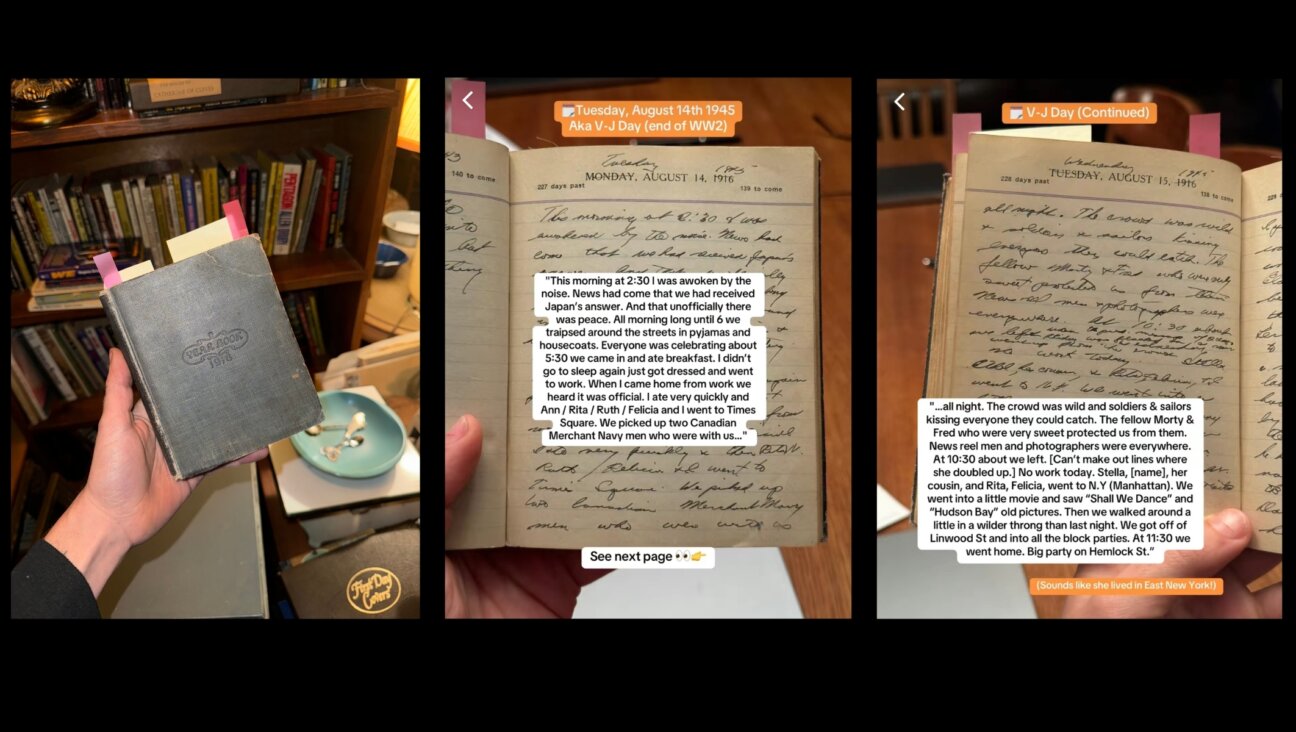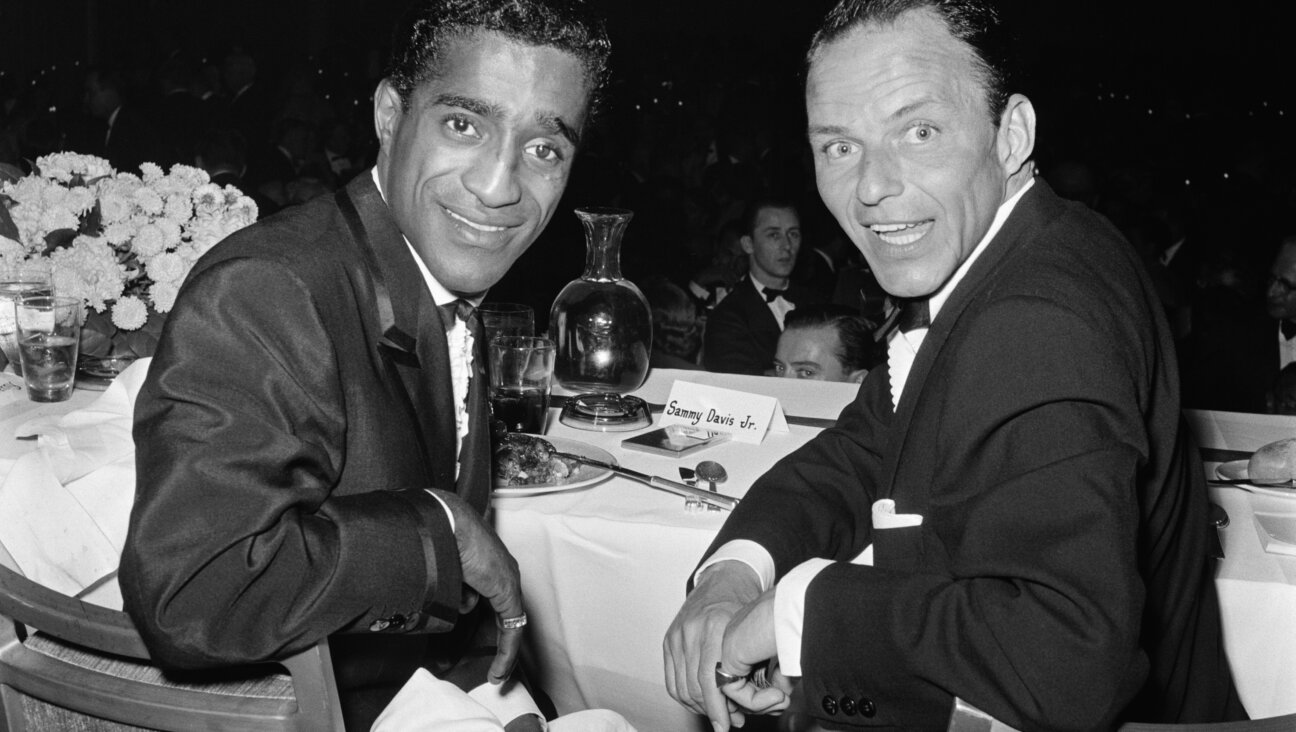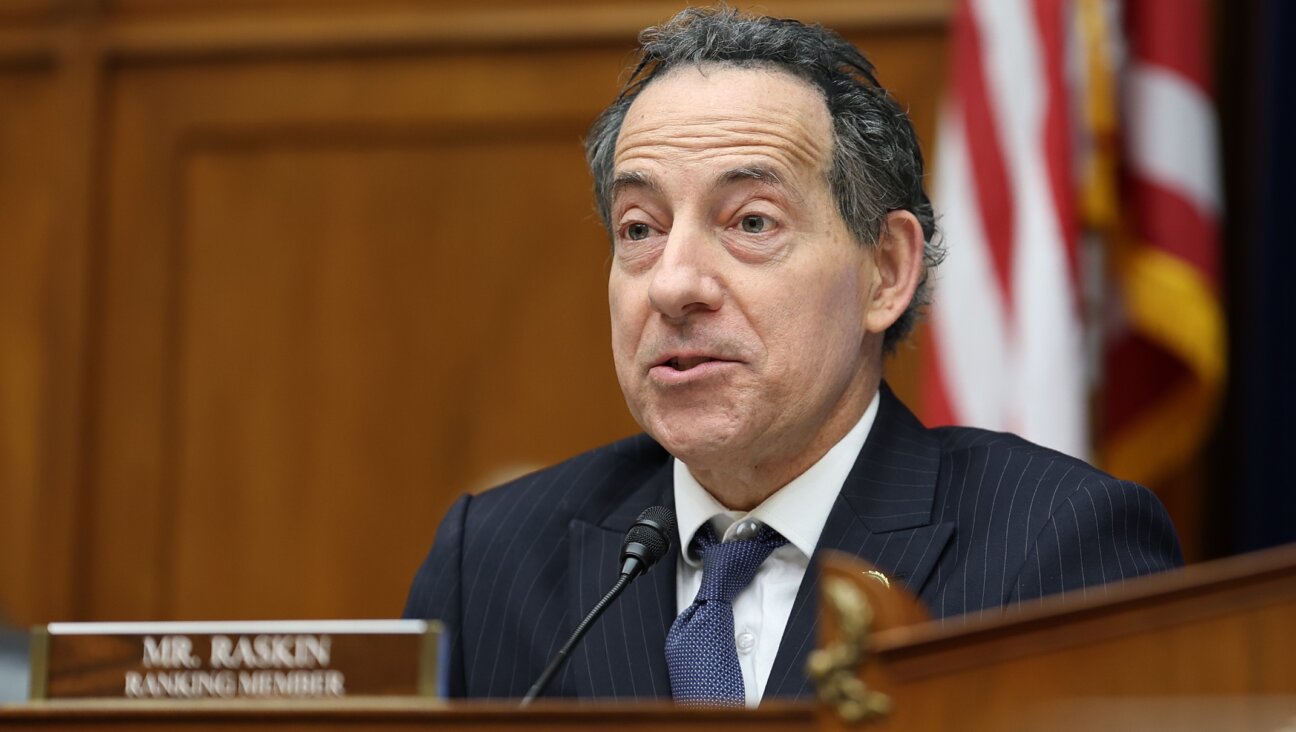Seeing Palestinian Resistance for Ourselves

Image by courtesy of brant rosen
Who will are the change agents of our world? Is it our elected officials and politicians or the ones who march in the streets in order to hold them accountable? These questions were clarified for me in profound ways during my recent trip to the West Bank as part of a delegation of Chicago-area Jews and Palestinian Americans.
The focus of our delegation was the Palestinian popular resistance movement in the West Bank, a phenomenon that is sadly unfamiliar to the majority of Americans and American Jews. In a world far removed from the images reflected in the mainstream media and the postures of political elites, we discovered a decidedly different reality: ordinary men and women struggling to live lives of dignity while actively resisting an inequitable and oppressive military occupation.
During our weeklong stay, we were hosted in Bil’in, a village that is has, along with many other villages throughout the West Bank, long been holding weekly popular demonstrations against the occupation over the past ten years. In Bil’in, as in most villages in this movement, the focus of the protests are Israel’s Separation Wall which cuts into the heart of numerous Palestinian populations centers, devastating these communities by cutting them off from their olive groves and farmland.
These weekly demonstrations have become part of the fabric of West Bank life for the past ten years, though few Americans are even aware of their existence. They have consistently been met with overwhelming military force from the IDF. Scores of Palestinians have been injured or killed in these protests, largely from high velocity tear gas canisters, coated steel bullets and live ammunition fired directly into crowds of unarmed protesters.
As we quickly came to see, the violence faced by Palestinians under occupation is a palpable and all-encompassing aspect of their lives. While the political parameters of this conflict are often characterized by Israel’s demand for Palestinian leaders to renounce and rein in Palestinian violence, the view from the ground reveals a different picture entirely: it is the Palestinians who live within a constant daily context of violence.
This is a difficult concept to grasp for those who have not visited or lived in the Occupied Territories. Every day Palestinian mothers, fathers and children experience physical violence from soldiers and settlers who attack them with impunity. Every day, moment they experience the structural violence of checkpoints, land confiscation, and home demolitions.
Our delegation experienced three violent encounters with the IDF during our short one-week stay. While touring the refugee camp of Aida, we inadvertently walked into the line of fire as the IDF shot tear gas canisters directly at local children. One morning in Bil’in we awoke to the sounds of explosions and gunshots. When we ran outside we found the entire village shrouded in thick, choking tear gas. We later learned that the IDF had chased a suspect in a bus bombing into the area and had killed him in a cave on the edge of Bil’in. Before they left, they bulldozed olive trees, shot up the elementary school and shot tear gas throughout the entire village.
One member of our delegation, Kalman Resnick, spent a day monitoring settler attacks on the Palestinian olive harvest with Israeli organizations Rabbis for Human Rights and Yesh Din. Kalman, a seasoned immigration lawyer from Chicago well versed in the Israel/Palestine conflict returned to our group that evening shell-shocked by what he had witnessed. He showed me nearly one hundred pictures he had taken on his phone – among the wretched images were severely injured Palestinians (including one man with his head split open), rows and rows of olive trees hacked to the ground and farmers literally attempting to harvest olives from dead trees.
As Israeli journalist Mairav Zonszein recently wrote in the pages of the Forward:
These incidents — now particularly heightened during the olive harvest season — are not the aberration from the norm, but a regular feature of life in the occupied West Bank. In 2012, over 7,500 Palestinian olive trees were destroyed. In the 5-year period between 2007 and 2011, there was a 315 percent increase in settler violence
Despite this overwhelming context of everyday violence, we witnessed remarkable examples of principled steadfastness by the leaders of the Palestinian popular resistance. Perhaps the most powerful occurred during the weekly protest in the village of Al Ma’asara, who were celebrating the seven-year anniversary of their participation in the West Bank popular resistance movement.
At the outset, it felt to me that this protest resembled many other American demonstrations in which I have participated over the years. The street was filled with hundreds of individuals: young and old, locals joined together with Israeli and international solidarity activists. There was a joyous air of solidarity as we chanted through the streets and were cheered on by bystanders.
At the end of the main street, however, the tension level changed dramatically. When the marchers encountered a long line of Israeli soldiers in riot gear blocking our way to the Wall, we pressed up close against the soldiers and a standoff commenced. After a military commander announced that we were denied passage, a leader of the local popular resistance committee, Mahmoud Zwhare, stepped forward and starting chastising the soldiers in English.
Careful not to use any physical violence or violent rhetoric, he asked the soldiers why they were not allowed the right to live and assemble freely in their own village. He explained to them they could oppress the villagers all they wanted, but one day like all oppressed people, they would be free. Pointing to their riot gear, their bulletproof vests and their M-16s, he noted that all of the extensive equipment they used to protect the wall was meaningless when the real wall they needed to address was the wall “in their minds.”
The protest ended without violence, though there were some moments of pushing and shoving between soldiers and protesters – and as we left the demonstration we learned that there had been a tear gas attack in another part of the village. As I thought about our experience later, it occurred to me that this was precisely the same circumstance that occurred on the Edmund Pettus Bridge in Selma in 1965. The demand for justice was the same, the solidarity was the same, the method of civil disobedience was the same, as was the show of force by a brutal and over-militarized gauntlet. Moreover, that particular standoff ended in a way all to familiar to Palestinians. In a very real sense, Bloody Sunday is reenacted every week in villages throughout the West Bank.
In our meetings with popular resistance leaders we heard many common refrains. Our host Iyad Burnat of Bil’in and many others spoke of Ghandi, Dr. Martin Luther King and Nelson Mandela as role models. We heard a deep disillusionment with political leaders on all sides. And we heard of their desire to create a “Third Global Intifada” worldwide movement of solidarity consciously modeled on the grassroots popular resistance of the First Intifada.
At the same time, however, the Palestinian popular leadership left us with the ominous impression that their movement is fast arriving at a moment of truth. The Israeli military is successfully inhibiting the growth of the popular resistance by jailing its leaders indefinitely and dividing villages from one another through a massive occupation regime. Nearly every leader with who we spoke had spent considerable time in jail, including our Bil’in host Iyad Burnat and Bassem Tamimi of Nabi Saleh.
In numerous conversations, popular resistance leaders expressed the frustration that it is becoming increasingly difficult to maintain morale and convince new villages to join the movement as Israel’s settlements expand and their oppressive reality continues unabated. Despite the profound steadfastness of so many Palestinians, we sensed a growing fear that if the Occupation’s brutal reality is allowed to continue indefinitely, armed resistance will break out across the West Bank – i.e. that the next mass Palestinian movement will look more like the Second Intifada than the First.
It is time for those who venerate the American civil rights movement and the South African anti-apartheid movement to take a good hard look at these Palestinians who are likewise putting their bodies on the line to resist an unjust and inequitable regime. While many liberals – particularly in the American Jewish community – will clearly be loath to support a “Third Global Intifada,” it is well worth asking: will we continue to put our faith in fruitless political negotiations that only entrench an inequitable status quo or a popular Palestinian movement that is resisting this oppression in the manner of so many similar movements before them?
Who are the true change agents in the world? After living with and marching with the Palestinians throughout the West Bank, I couldn’t help but recall the words written by Dr. Martin Luther King in a Birmingham jail in response to liberal clergy colleagues who urged had urged him not to march, counseling that negotiations were a “better path:”
We know through painful experience that freedom is never voluntarily given by the oppressor; it must be demanded by the oppressed.
Brant Rosen is a congregational rabbi in Evanston, IL and the co-founder of the Jewish Voice for Peace Rabbinical Council.
A message from our Publisher & CEO Rachel Fishman Feddersen

I hope you appreciated this article. Before you go, I’d like to ask you to please support the Forward’s award-winning, nonprofit journalism during this critical time.
We’ve set a goal to raise $260,000 by December 31. That’s an ambitious goal, but one that will give us the resources we need to invest in the high quality news, opinion, analysis and cultural coverage that isn’t available anywhere else.
If you feel inspired to make an impact, now is the time to give something back. Join us as a member at your most generous level.
— Rachel Fishman Feddersen, Publisher and CEO







